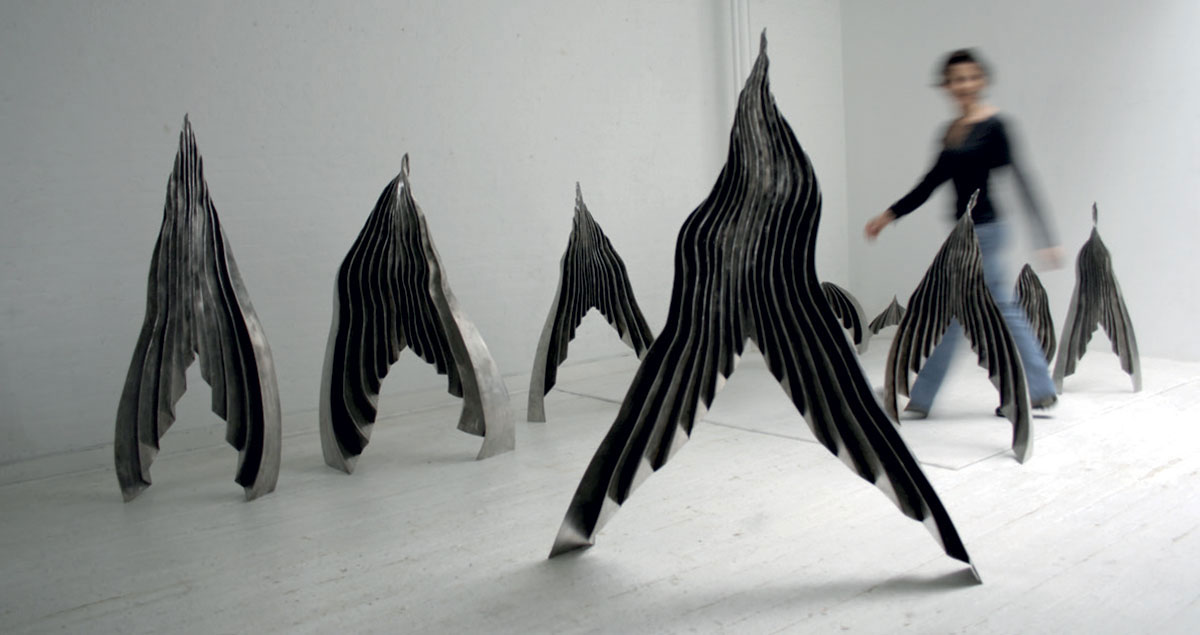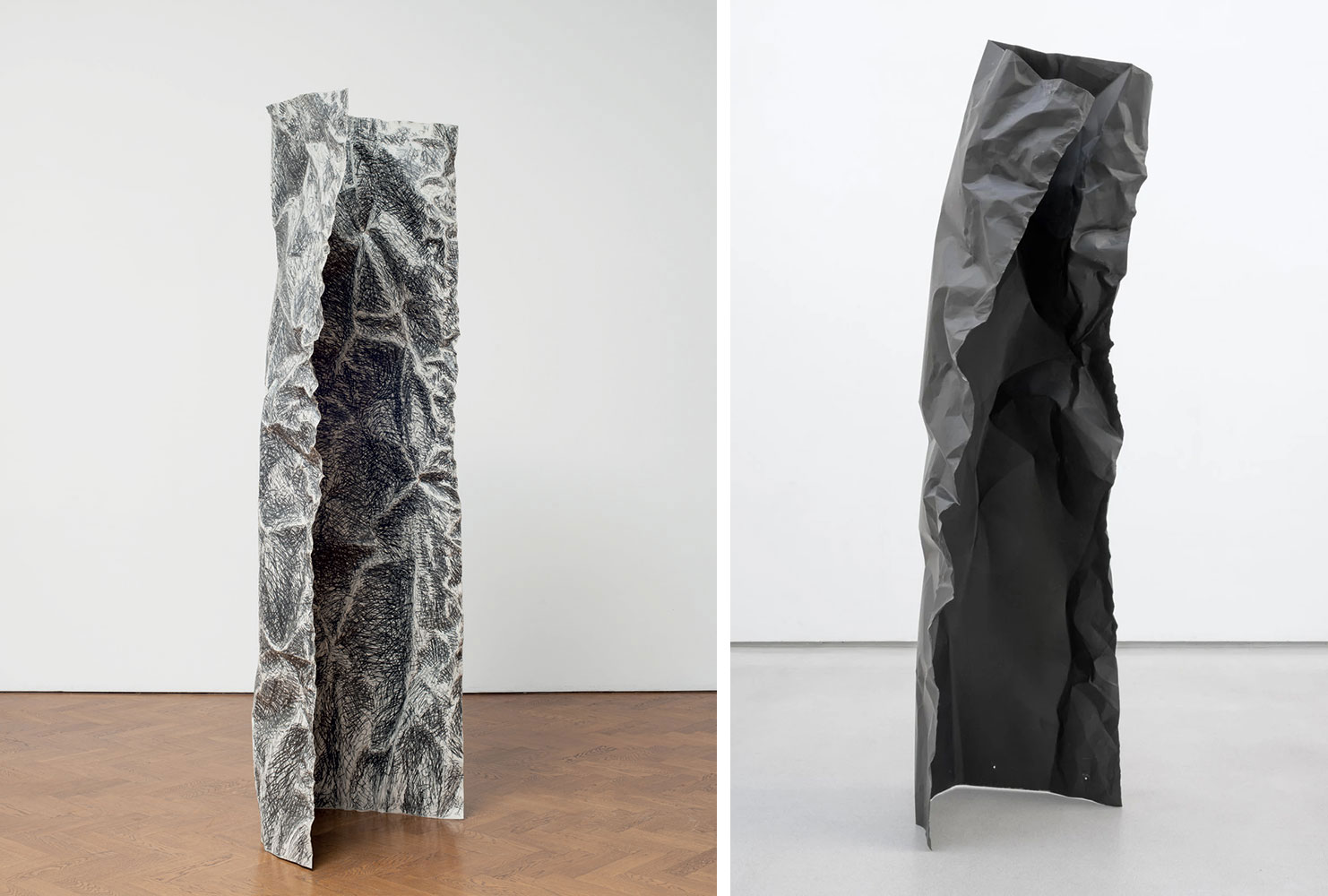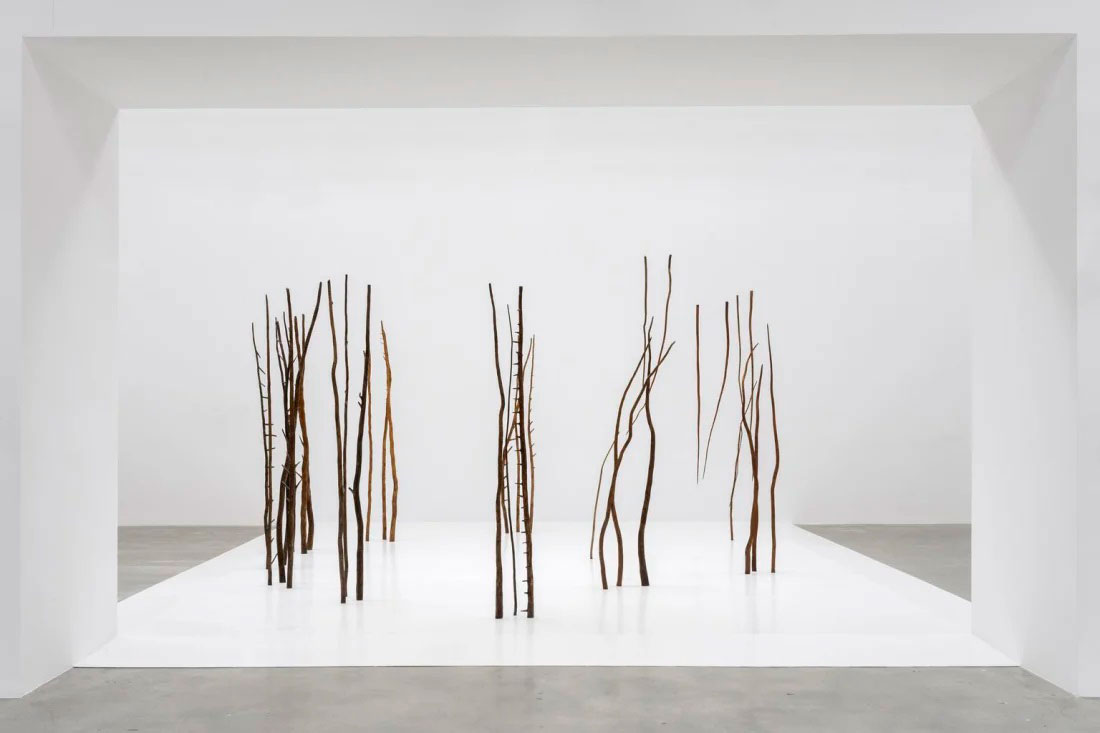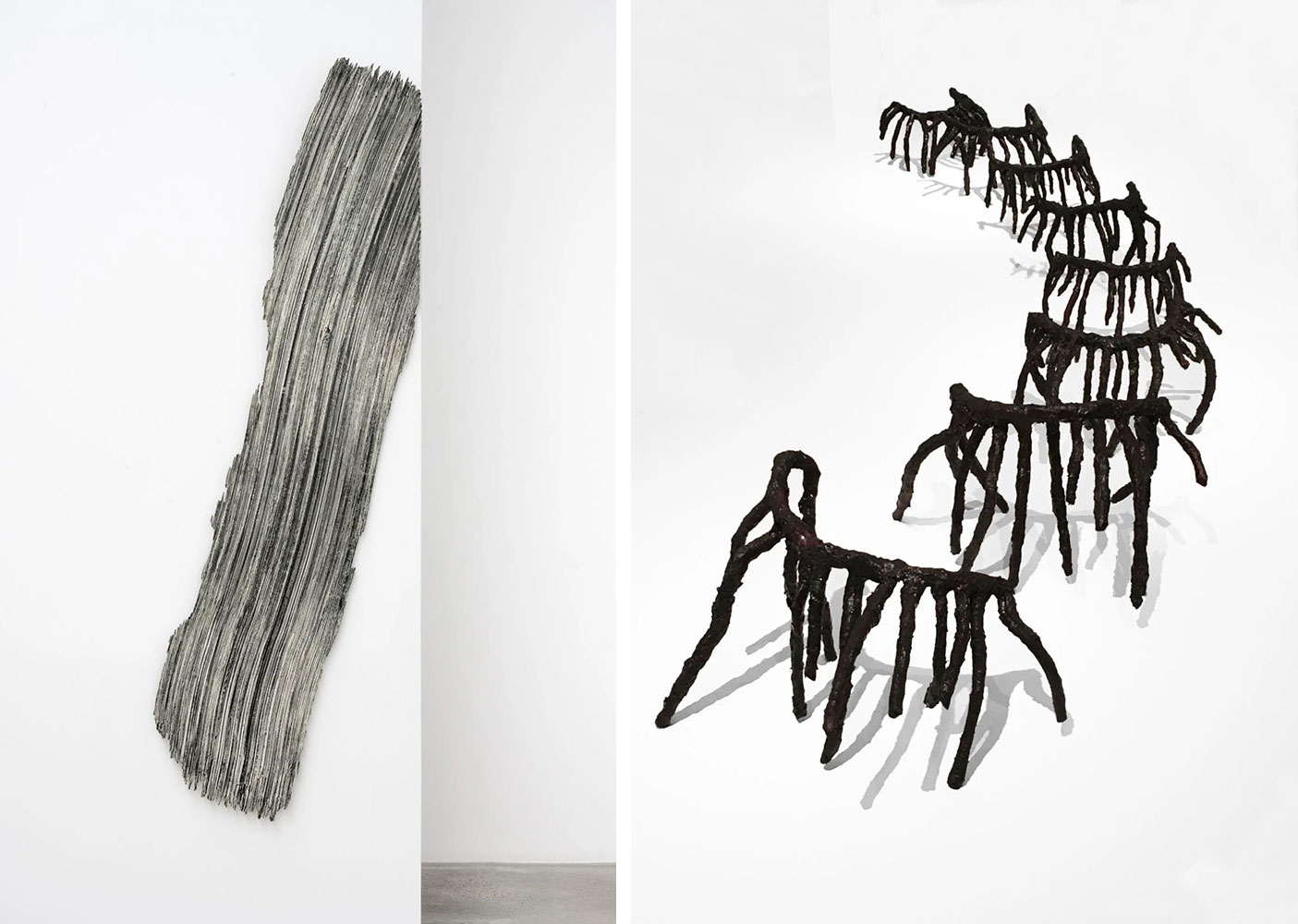ART CITIES: London-Rosemarie Castoro
 Finding early inspiration in experimental dance and choreography while a student at the Pratt Institute, Brooklyn, and in subsequent collaborations with Minimal dancer Yvonne Rainer in the 1960s, Rosemarie Castoro’s work throughout her life exhibited a distinctly performative character and understanding of space and movement.
Finding early inspiration in experimental dance and choreography while a student at the Pratt Institute, Brooklyn, and in subsequent collaborations with Minimal dancer Yvonne Rainer in the 1960s, Rosemarie Castoro’s work throughout her life exhibited a distinctly performative character and understanding of space and movement.
By Dimitris Lempesis
Photo: Thaddaeus Ropac Gallery Archive
The exhibition “Working Out”, spans four decades of Rosemarie Castoro’s multidisciplinary practice. The exhibition focuses on Rosemarie Castoro’s giant Brushstrokes and gesso sculptures from the 1970s, shown alongside a site-specific recreation of her architectural intervention Cracking and a grouping of important late works in welded metal. Taking its name from art critic and curator Lucy R. Lippard’s essay “Working Out” (1975), the exhibition emphasises the physicality of Castoro’s approach to art-making, which was informed by her background in dance. Throughout her life, her work exhibited a distinctly performative character and understanding of space and movement. Rosemarie Castoro formed her unique artistic practice within the context of minimalist and conceptual art in the 1960s, sharing a SoHo loft with then-partner and fellow artist Carl Andre that became a social hub for creatives, including Lawrence Weiner, Richard Long and Sol LeWitt. Despite her centrality to the New York art scene, she was not afforded the same visibility and institutional support as her male contemporaries who rose to international fame. Her exclusion from the major exhibition “The Art of the Real”, at The Museum of Modern Art in 1968, reflected contemporary attitudes towards women, but also Castoro’s departure from the minimalist mainstream. Defying easy categorisation, Castoro considered herself a “paintersculptor”. Rosemarie Castoro’s early paintings explored sophisticated color relationships, but she began working monochromatically from around 1970, in part as a political reaction to the ongoing Vietnam War. She describes how, in 1972, her “brushstrokes” snapped away and landed smack on the existing brick walls of my studio’. The giant “Brushstrokes” were created by applying a mixture of gesso, modelling paste and marble dust to Masonite panels with a broom or other non-artist-brushes, leaving large gestural striations into which Castoro rubbed graphite. She then carefully cut out the shapes, using a sabre saw to create the delicate, fragmented edges that heighten the illusion of an enlarged brushstroke on the wall. The earliest Brushstrokes consisted of single flowing strokes, which later grew into multi-part wall installations such as “Mimic” (1972). These were often installed so that they appeared to emerge organically from the corner of a room, as in “Corner Cut”, or growing downwards from the ceiling, as in “Bangs” (both 1972). Around the same time, Castoro was experimenting with other architectural interventions, such as “Small Burial” (1973). The artist described how, while teaching sculpture at the University of California, Fresno, she was ‘devoid of the New York crowds of people’ and ‘felt an isolation that was relieved by staring into a barrel of wire’. Using this wire, Masonite, gesso and modelling paste, she created twig-like stalactites that grew down from the ceiling. A site-specific intervention has been recreated for this exhibition, based on the artist’s “Cracking” works from 1969. The idea first took shape in March of that year when, while cycling home at midnight, a leaking tin of white paint left a linear trail behind her. She adapted this concept to create a division in her loft space. In April 1969, she ‘cracked’ a block of the sidewalk along 13th Street in New York, using a line of silver tape, and later applied the same treatment to the interior of Paula Cooper Gallery in New York and the Seattle World’s Fair Center. Rosemarie Castoro first began welding in the late 1980s, refining her skills and techniques over the years to find its most sophisticated expression in the curved lines and complex folds of her multi-part sculptural installation “Mountain Range” (2003–06). This was preceded by a series of ethereal, hand-moulded forms in wire mesh that the artist called “Mosquito Networks”, created while she was teaching in Italy and did not have access to her studio of welding equipment. Whether formed by hand or with an electric arc, Castoro’s intensely physical engagement with her works was evident throughout her career.
Photo: Rosemarie Castoro, Mountain Range, 2003. Welded stainless steel, 9 parts. 350 x 650 cm, © Rosemarie Castoro, Courtesy Rosemarie Castoro Estate and Thaddaeus Ropac Gallery
Info: Thaddaeus Ropac Gallery, Ely House, 37 Dover Street, London, United Kingdom, Duration: 6/4-21/5/2022, Days & Hours: Tue-Sat 10;00-18:00, https://ropac.net

Right: Rosemarie Castoro, Black Flasher A, 1979, Galvanised steel and paint, 250 x 84 x 24 cm, © Rosemarie Castoro, Courtesy Rosemarie Castoro Estate and Thaddaeus Ropac Gallery


Right: Rosemarie Castoro, Land of Lashes, 1976, 8 sculptures: steel, fibreglass, epoxy, styrofoam and pigment, Installation: 322 x 122 cm, © Rosemarie Castoro, Courtesy Rosemarie Castoro Estate and Thaddaeus Ropac Gallery
